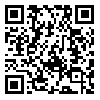Volume 13, Issue 4 (Winter 2022)
3 2022, 13(4): 17-32 |
Back to browse issues page
Download citation:
BibTeX | RIS | EndNote | Medlars | ProCite | Reference Manager | RefWorks
Send citation to:



BibTeX | RIS | EndNote | Medlars | ProCite | Reference Manager | RefWorks
Send citation to:
Investigation of 11-years trend of catch per unit effort (CPUE) of Banana shrimp (Penaeus merguiensis) and Jinga shrimp (Metapanaeus affinis) in Hormozgan province and prediction of catch rate. 3 2022; 13 (4) :17-32
URL: http://jmb.ahvaz.iau.ir/article-1-947-en.html
URL: http://jmb.ahvaz.iau.ir/article-1-947-en.html
Abstract: (1049 Views)
The purpose of this study was to investigate the trend of catch per unit effort (CPUE) of Banana shrimp and Jinga shrimp during the years 2009 to 2019 and also to predict the amount of shrimp catch in the next five years in the in three areas of Bandar Abbas, Qeshm and Bandar Kolahy.This study was conducted by collecting fishing information during the mentioned period and in three areas. The highest amount of CPUE of banana shrimp during these years was in 2018 in Kolahy in the amount of 238.02 Kg/day*vessel and the lowest amount was in 2019 in Bandar Abbas in the amount of 33.16 Kg/day*vessel. Jinga shrimp in 2016 in Kolahy with 91.77 Kg/day*vessel had the highest CPUE and in 2011 with 9.7 Kg/day*vessel in Qeshm had the lowest CPUE. Using R software, the trend of changes in CPUE was investigated in Mannkendall test and modeled by using auto-correlated models with ARIMA moving average. The trend of changes in CPUE of banana and Jinga shrimp was decreasing, significant, (P <0.05) and without fluctuation in Bandar Abbas, in Qeshm was ascending, without significant difference (P <0.05) and without fluctuating and in Bandar Kolahi was ascending and significant (P <0.05) and has fluctuated. The best prediction model for banana shrimp in Bandar Abbas and Qeshm was (0,1,0) ARIMA with equation y_t = y_ (t-1) and in Kolahi the model (1,1,0) ARIMA with equation y_t = y_ ( t-1) -0.7833 (y_ (t-1) -y_ (t-2)) was obtained as the best model. For Jinga shrimp, in Bandar Abbas the best model was (0,1,0) ARIMA with equation y_t = y_ (t-1), the best model in Qeshm (0,0,0) ARIMA with equation y_t = 40/2273 and in Kolahy was (1,1,0) ARIMA with the equation y_t = y_ (t-1). The forecast rate was calculated with 80% and 95% confidence for 5 years. According to the models, the CPUE of both species in Kolahy will be higher than the other two areas. The present study can be an effective tool for predicting the fishing situation and also helps make decisions and manage of The Persian Gulf fisheries.
Type of Study: Research |
Subject:
Fisheries
Received: 2022/09/28 | Accepted: 2022/01/30 | Published: 2022/01/30
Received: 2022/09/28 | Accepted: 2022/01/30 | Published: 2022/01/30
| Rights and permissions | |
 |
This work is licensed under a Creative Commons Attribution-NonCommercial 4.0 International License. |



